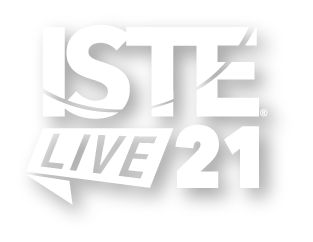

Responsible Digital Collaboration |
Listen and learn : Lecture
Amanda Reulet Amber Vlahos
Learn about the importance of teaching digital citizenship in conjunction with content areas. See examples and get suggestions on how to implement digital citizenship into all content areas. Also explore tools, lesson ideas and management tips for allowing students to collaborate digitally.
| Audience: | Teachers |
| Skill level: | Beginner |
| Attendee devices: | Devices useful |
| Attendee device specification: | Smartphone: Android, iOS, Windows Laptop: PC, Chromebook, Mac Tablet: Android, iOS, Windows |
| Topic: | Communication & collaboration |
| Grade level: | 3-5 |
| Subject area: | Language arts, Social studies |
| ISTE Standards: | For Educators: Citizen
|
Digital Collaboration is more important than ever in this virtual/hybrid environment. In order for students to effectively collaborate they must first know how to be good digital citizens. Participants will gain a general understanding of Digital Citizenship and the role it plays in Digital Collaboration. The ISTE Digital Citizenship Standards will be examined and participants will leave with some suggestions for how to teach and model those standards in their lessons. Participants will walk away with tools and tips to use for collaboration. Participants will share challenges and barriers to effective collaboration.
Content and activities:
Attendees will understand what digital citizenship is. The ISTE standards for Digital Citizenship will be covered. Ways to implement Digital Citizenship within the classroom for students of all ages and good collaborative tools will be covered. Attendees will participate in some of the activities that are provided in the session.
Time:
10 minutes will be spent on explaining digital citizenship along with the ISTE standards. 10 minutes will be used to go over different tools and resources to cover digital citizenship within the classroom. 10 minutes will be spent on explaining different collaborative tools and websites for implementation in the classroom. 10 - 15 minutes will be spent on allowing attendees to explore the collaborative tools and resources, along with any questions.
Process:
Peer to peer interaction - using Padlet to share and discuss hardships with digital citizenship in the classroom and to problem solve them.
Device-based activities - having attendees explore some of the websites and activities that are provided.
Our presentation uses the ISTE Student Standards as a guideline for good practice. https://www.iste.org/explore/5-competencies-digital-citizenship helps to unpack those standards and understand the importance.
Digital Collaboration is an important skill in 21st Century Learning. The importance of skills relevant to 21st century learning can be found at https://journals.sagepub.com/doi/abs/10.1177/003172170909000905?journalCode=pdka.
John Hattie’s Effective Research on effect emphasizes the importance of collaboration. https://visible-learning.org/wp-content/uploads/2018/03/VLPLUS-252-Influences-Hattie-ranking-DEC-2017.pdf
Collaboration and Digital accessibility are in the likely to have a positive effect category. Technology integration lands in the potential to accelerate the student learning category.

